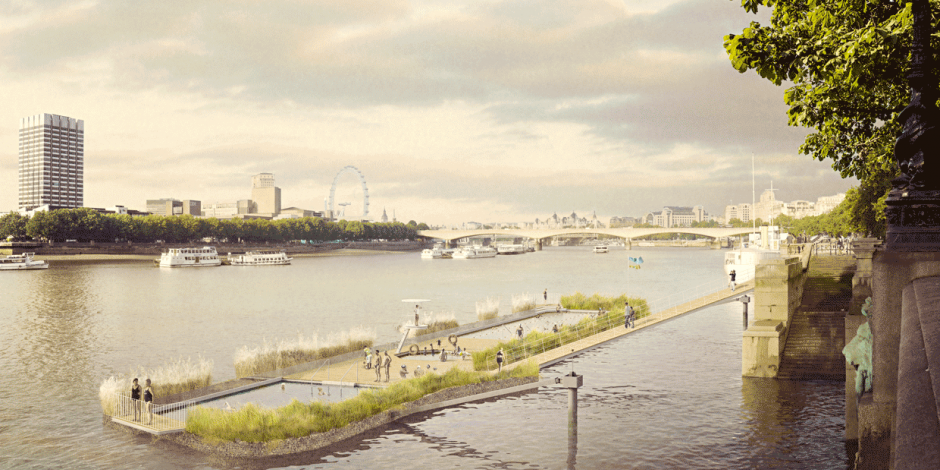Starten Sie den Audio-Text
Mit dem Audio-Player können Sie sich den Text anhören. Darunter finden Sie das Transkript.
Transcript: London 2037
Once the largest city in the world, London continues to to evolvesich entwickelnevolve in surprising ways. In the 21st century, it’s slowly becoming more like a collection of small villages around one central beating heart. Spotlight correspondent Andrew Stone looks at what the future might hold for the English capital. You can read the article in the current issue of the magazine.
Listen, and try to answer these questions: What caused the Great Smog of 1952? In what year was the River Thames declared “biologically dead”? And what percentageprozentualer Anteilpercentage of London is covered by trees?
An end to stink and smog
One feature of the London of the future that you won’t see or miss is air pollution.
The city’s air has become easier to breathe every year, making an outdoor, cafe lifestyle possible. So much so, in fact, that it’s hard to believe that London was an ecological disaster zone, even in relatively recent history. In the Great Smog of 1952, coal smoke and pollution from traffic were so bad that, in some parts of the city, you couldn’t see more than a metre in front of you. At least 4,000 Londoners died as a result.
Like the air, the water has been getting cleaner, too. The river was an open sewerAbwasserkanalsewer until the Great Stink of 1850 forced Parliament to look at the problem. Despite improvements, high levels of pollution continued for another century, until, in 1957, the River Thames was declared “biologically dead”.
Nowadays, smog is just a memory. Life is slowly returning to the river. The Thames is now home to 115 types of fish, including seahorseSeepferdchenseahorses and sharkHaisharks, as well as 92 types of bird.
But there’s much more to do. The air will be even cleaner as London works to meet its net zero emissions target in 2030 and as its fleets of buses and taxis go electric. In 2025, the 24-kilometre-long Tideway Tunnel will open its pipes to the 39 million tonnes of raw sewageungeklärtes Abwasserraw sewage that still, unbelievably, flows into the Thames every year.
The improvement to water quality should be great for London’s inhabitants and visitors. After 2025, we can expect London to be like Berlin, Copenhagen or Zurich, with open-water swimming areas. The Thames Bath Lido project is one such vision of this future.
And London’s small spaces are being to rewildrenaturierenrewilded, too. Already a leafy city – London is an urban forest of eight million trees that cover around 21 per cent of its land area – there are plans to create new green corners in “pocket parks”, as well as green roofs and green walls that bees love.
tree coverBaumkronendachTree cover will grow by 10 per cent of current levels by 2050. This will include 60 hectares of former royal hunting ground, as part of London’s project to make the city greener.
Were you able to answer the questions? The Great Smog of 1952 was caused by coal smoke and pollution from traffic. The River Thames was declared “biologically dead” in 1957. Around 21 per cent of London is covered by trees: approximately eight million of them.
Neugierig auf mehr?
Dann nutzen Sie die Möglichkeit und stellen Sie sich Ihr optimales Abo ganz nach Ihren Wünschen zusammen.



